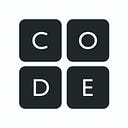Research shows 5x computer science participation at schools in Code.org program
Note: As of September 2020, this post contains outdated language or graphics referencing “underrepresented minorities.” To see our current language policy around race, ethnicity, and gender, see this support article.
Since Code.org’s launch, we’ve been asked: “Can our public schools really teach computer science?” We had embarked on a national program to prepare tens of thousands of teachers to add computer science to the school curriculum — a subject most of them had never learned themselves! Since then, we’ve had 80,000 teachers attend our workshops, and to show their success, we’ve shared the impressive number of students in their classrooms and the number who took or passed the AP Computer Science exam.
Today, we’re excited to share stronger evidence from a formal research study, conducted by West Coast Analytics, measuring the impact of the Code.org professional learning program for CS Principles.
Schools in the Code.org program see 5x increase in student participation and success in CS
Compared with similarly-situated schools, a school’s participation in the Code.org program causes an estimated five-fold increase in the number of students that take, and earn qualifying scores on the AP Computer Science Principles exam.
Even greater gains for young women and underrepresented minorities
Among young women and underrepresented minorities, the results are even more encouraging. A school’s participation in the Code.org program causes an estimated ten-fold increase in the number of Black students that took the AP exam, and a near 7-fold increase in the number of Black students who earned qualifying scores versus similar schools.
We’re a long way from balanced representation of young women and underrepresented minorities in computer science, and these results are incredibly promising. Last year we showed that racial diversity of students in Code.org classrooms almost mirrored their school population. If every school in the U.S. had similar results, we’d see far greater equity in this field.
Preparing students for the future
A high school background in computer science is foundational for every career, regardless of whether a student wants to become a lawyer, a doctor, a farmer, or a computer scientist. Of the students in our classrooms, 78% report an interest in studying more computer science. Whether they continue their studies or not, their early exposure to computer science will better prepare them for the 21st century.
And although not every student passed the AP exam, research shows that students who take AP courses and exams have a greater likelihood of attending college, earning better grades, and graduating from college on time, regardless of whether or not they pass the exam.
Our professional learning program works
The study compared AP Computer Science exam participation and scores at schools with a teacher that had gone through the Code.org Professional Learning Program, versus a set of comparison schools furnished by the College Board and statistically matched on location, size, and demographic makeup. You can read the full study here.
The Code.org Professional Learning Program
Designed with a comprehensive approach to address issues of diversity and equity, the Code.org professional learning program prepares schools and teachers to add computer science to the school curriculum, and to increase participation, especially among young women and underrepresented minorities. Code.org uses a variety of strategies to improve diversity, and we focus on schools in low-income neighborhoods where students have historically not had access to computer science.
We’re excited to share research that shows the impact that the Code.org strategy and approach are making on a larger scale. These students are destined for success, and we can’t wait to see what they accomplish.
Baker Franke, Code.org Research and Evaluation Manager
